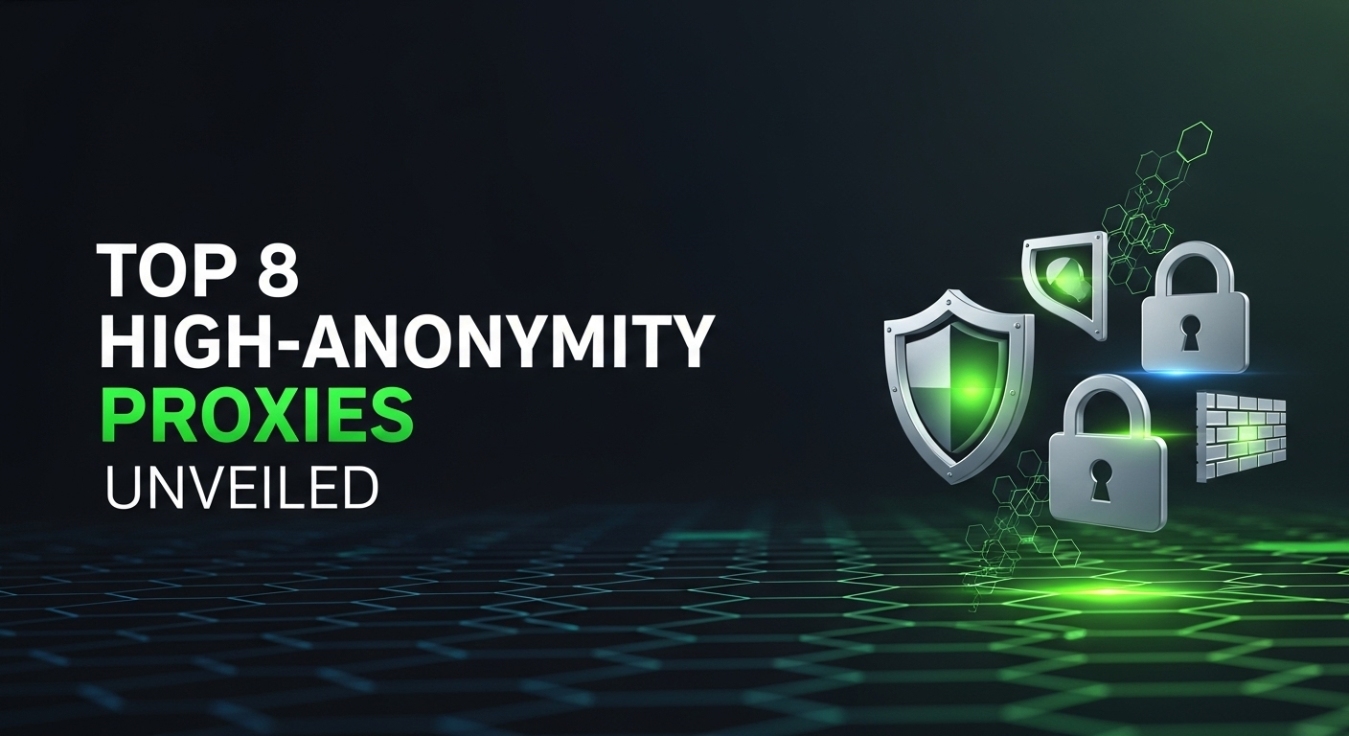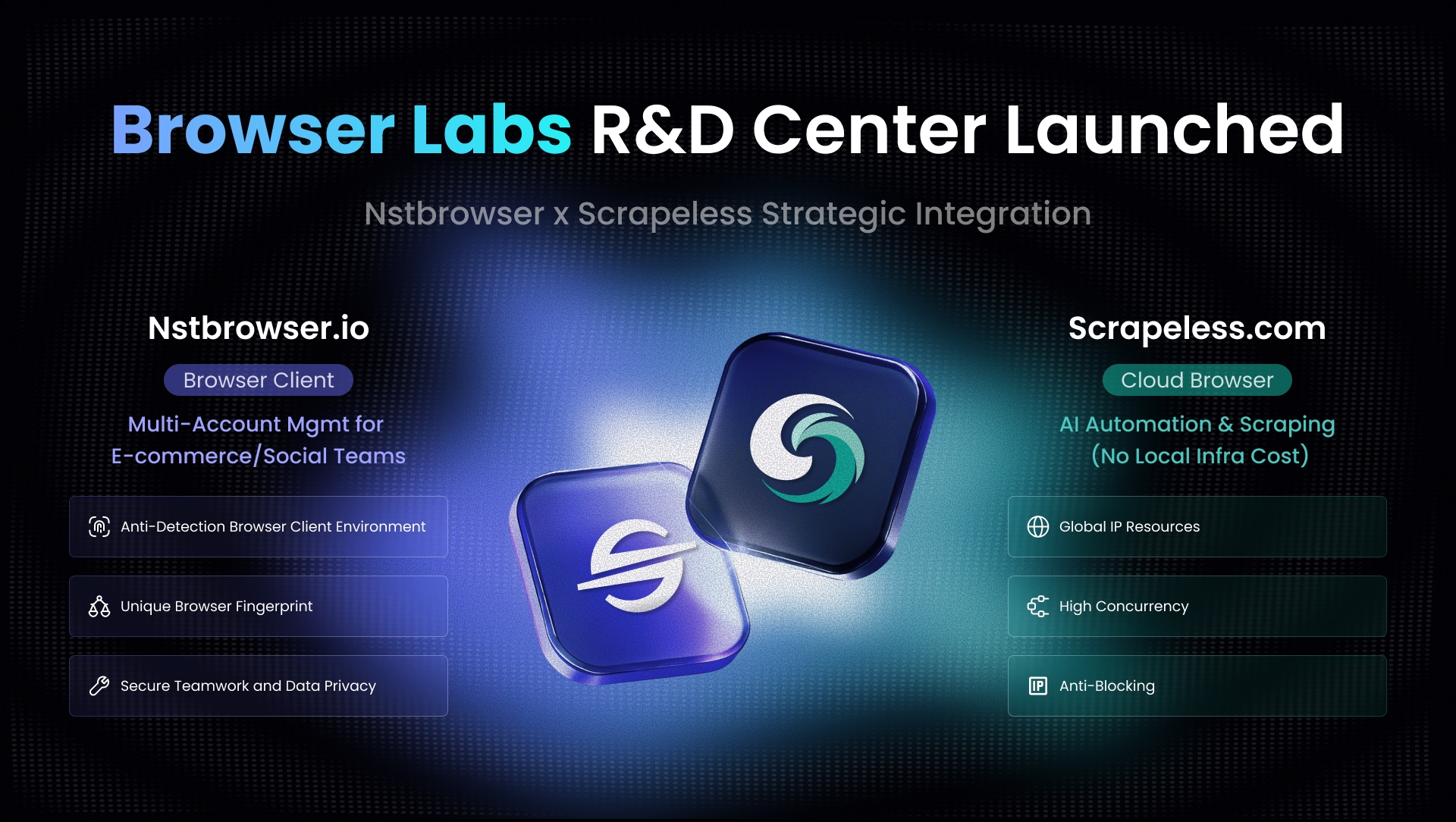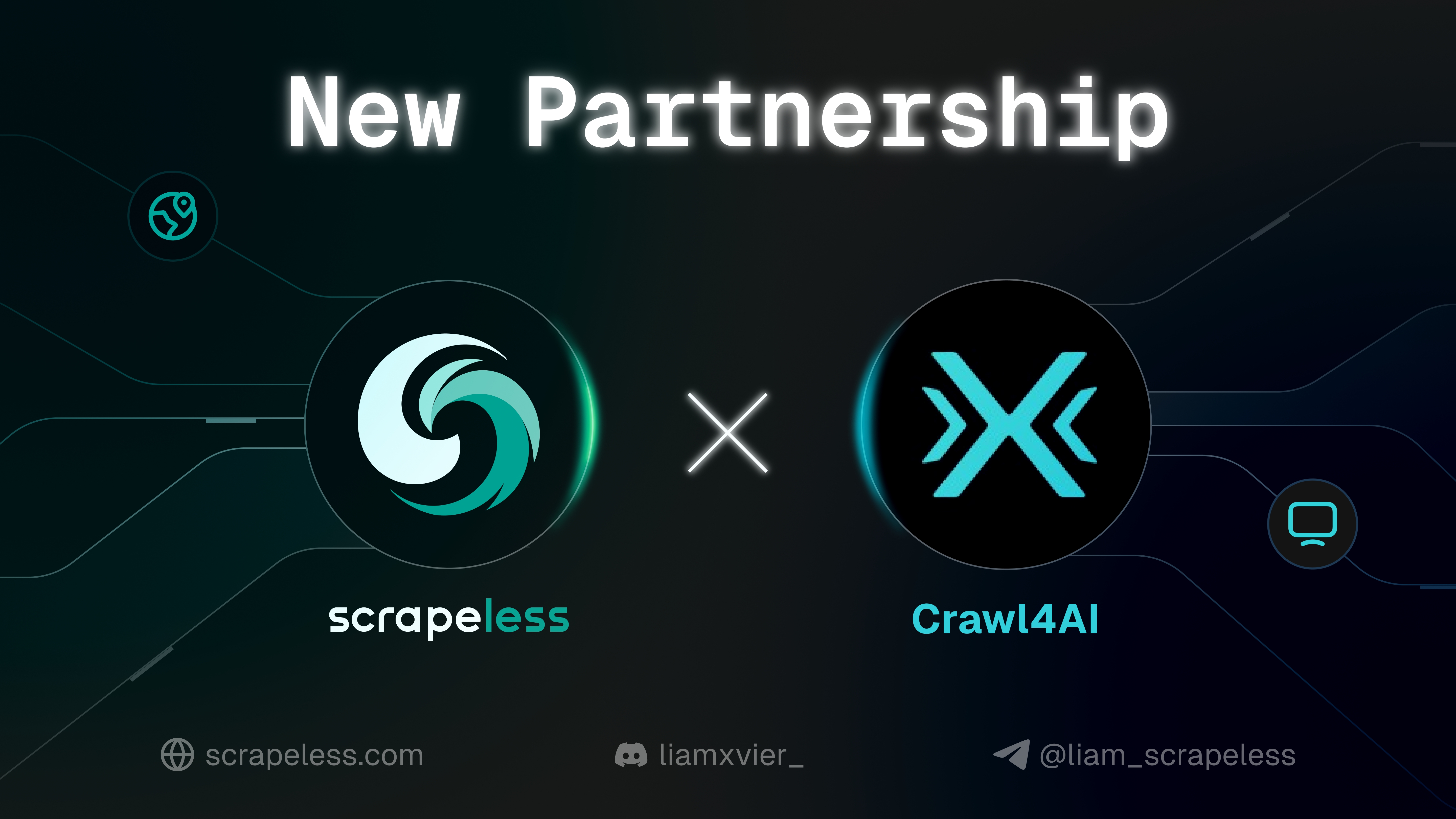Top 8 High-Anonymity Proxies Unveiled
Expert Network Defense Engineer
IN THIS ARTICLE:
- What are High Anonymity Proxies?
- Proxy Anonymity Levels
- Key Metrics for Evaluating High-Anonymity Proxies
- How Enhanced Anonymity Proxy Works in Cybersecurity
- The Top 8 High-Anonymity Proxies of 2025
- How to Choose the Right High-Anonymity Proxy for You
- Conclusion
What are High Anonymity Proxies?
A high-anonymity proxy (also called an “elite proxy”) is a proxy server that conceals the user’s real IP address and hides the fact that a proxy is being used. ([nordvpn.com][1])
Specifically: when you send a web request via a high-anonymity proxy, the destination server sees only the proxy’s IP and receives no HTTP header or metadata indicating proxy-usage. ([docs.proxymesh.com][2])
In practice, this means your connection appears identical to a “normal” direct user connection—thus minimising risk of detection or blocking.
Why they matter
- When scraping or automating at scale, websites often detect proxies via headers, IP-patterns or behavioural signals. A high-anonymity proxy avoids this.
- They support geo-location targeting while maintaining stealth—useful for global tasks, A/B testing, ad verification.
- For sensitive operations (cybersecurity, competitive intelligence, multi-account management) the risk of “proxy detected” is a major blocker; high-anonymity proxies reduce that risk.
- They can form part of a layered privacy or anonymity architecture where simple anonymous proxies aren’t sufficient.
Proxy Anonymity Levels
It’s essential to understand the taxonomy of proxy anonymity—so you can verify that your provider truly offers “high-anonymity”.
| Level | Proxy Type | What the Server Sees | Typical Use-Case |
|---|---|---|---|
| Level 3 – Transparent | Transparent Proxy | Your real IP + proxy header present | Caching, filtering (no real anonymity) ([docs.proxymesh.com][2]) |
| Level 2 – Anonymous | Anonymous Proxy | Your real IP hidden, but the server knows a proxy is used | Moderate privacy tasks ([evomi.com][3]) |
| Level 1 – Elite / High Anonymity | High-Anonymity Proxy | Neither your IP nor proxy metadata is revealed | Full anonymity for demanding tasks ([Proxyway][4]) |
Key distinguishing features of Level 1 (High-Anonymity Proxies):
- Header fields like
Via,X-Forwarded-For,Proxy-Connectionare removed or rewritten so nothing betrays proxy usage. ([docs.proxymesh.com][2]) - IP appears as if from a regular home or business user—not obviously from a known proxy pool.
- Often combined with IP-rotation, geo-diversity and session-control features to make detection harder.
Key Metrics for Evaluating High-Anonymity Proxies
When evaluating a service offering “high-anonymity proxies”, you should examine these metrics:
- Anonymity guarantee – Does the provider explicitly state “Level 1 / elite / high-anonymity”? Are there technical details proving header stripping and proxy invisibility?
- IP pool size & diversity – The broader the pool (especially residential/ISP type), the less reuse and the lower detection risk.
- Protocols supported – HTTP(S) and SOCKS5 support improves flexibility for scraping, automation, login workflows.
- Success rate & uptime – A 99 %+ success rate (requests served without block/failure) indicates maturity.
- Geo-location targeting & rotation – Ability to pick country/region or rotate IPs per request/session.
- Source of IPs – Residential, ISP or datacenter origin each carry trade-offs (residential best for stealth; datacenter cheaper/higher bandwidth but easier to detect).
- Session control / stickiness – Some tasks need a persistent IP across multiple requests (login, basket checkout) while others benefit from frequent rotation.
- Compliance, logging & ethics – Are IPs ethically sourced? Does provider log or expose metadata? Are they compliant with major regulations (e.g., GDPR)?
- Support & developer tooling – Good API, documentation, logs, 24/7 support.
- Cost structure – How are you billed (per GB, per IP, per concurrent connection)? Pricing often correlates with quality.
As one expert guide notes: “High anonymity proxies provide the highest level of anonymity compared to transparent or anonymous proxies.”
Another warns that free proxies (even if labelled “high-anonymity”) often fail in performance or security.
How Enhanced Anonymity Proxy Works in Cybersecurity
High-anonymity proxies are not just for scraping—they play a vital role in cybersecurity, privacy and business intelligence operations.
Use-cases & scenarios
- Web Scraping & Data-Mining: Suppose you’re collecting competitor pricing data from e-commerce sites in multiple countries. Using a high-anonymity proxy means the site sees seemingly normal users (reducing blocks), you can rotate geo-IP, and hide automation.
- Ad Verification & GEO Testing: A global marketing team needs to check how an ad renders in Japan, Brazil and Germany without revealing they’re using a proxy. High-anonymity ensures each request appears native to the target region.
- Multi-Account Access & Automation: Social-media managers handling dozens of accounts must reduce detection risk. A high-anonymity proxy masks not just IP but usage patterns better.
- Cybersecurity & Red Teaming: Penetration testers or red-teams may route traffic via high-anonymity proxies to avoid revealing origin and emulator usage, simulating “real user” access.
- Privacy & Anti-Tracking: A user or organisation that needs to mask online activity (e.g., researching disallowed jurisdictions) can use high-anonymity proxy to reduce tracking, although it’s not a standalone solution. (Reminder: no tool offers 100% anonymity).
How it technically works
- Client sends request → proxy replaces request headers, strips proxy-revealing metadata, presents a clean, legitimate IP address from its pool.
- Proxy supports rotation or session-stickiness depending on task.
- For geo-targeting, the IP presented matches the requested region.
- The target server logs the IP of the proxy, not the user’s real IP or the fact a proxy was used.
- Additional layers (encryption, VPN + proxy chaining) may be applied for extra security.
Practical considerations
- Even with a high-anonymity proxy, other signals (browser fingerprinting, behavior anomalies, cookies, login patterns) can still reveal you. Proxy is one layer of defence.
- Speed vs anonymity trade-off: ultra-high anonymity (residential IPs, rotation, session management) may yield higher latency or cost.
- Task-specific design: For heavy scraping bulk, datacenter proxies of high anonymity may suffice; for stealth, choose residential/ISP high-anonymity.
- Avoid free proxy lists for sensitive tasks—they often carry security risks. ([arXiv][5])
The Top 8 High-Anonymity Proxies of 2025
Here are eight leading providers of high-anonymity proxy services in 2025, with special focus on one recommended provider first.
1. Scrapeless (Residential / IPv6 / Datacenter) – Top Recommendation
- Offers Residential proxies: 90 M+ real-user IPs across 195+ countries.
- IPv6 proxies: 50 M+ premium pool, dedicated IPs, automatic rotation.
- Datacenter proxies: high-volume scraping with low latency & high throughput.
- Success rate claimed at 99.98%.
- Features include: Geo-location targeting; HTTP/HTTPS/SOCKS5 protocols; session customization; 24/7 developer support.
- Why it stands out: combination of large IP pool, multiple IP types (residential/ISP/datacenter), high anonymity promise, and strong feature set.
2. GeoNode
- Strong geo-targeting and large residential/ISP coverage.
- Specifically marketed for “high anonymity proxies” for scaling global tasks. ([geonode.com][7])
- Good option where geo-diversity is key.
3. Thordata
- Frames itself around proxy anonymity: their blog emphasises “high-anonymity proxies”.
- Useful if you prioritise stealth and anonymity above raw speed.
4. Adspower Proxy
- Designed for multi-account and automation workflows where proxy detection risk is high. Referenced in high-anonymity proxy context.
- Best for social media automation, ad management tasks.
5. Proxyway
- Offers enterprise grade compliance, detailed anonymity-level guides.
- Good choice if you care about auditability, logging, enterprise workflows.
6. Proxidize
- Unique mobile proxy integration plus high-anonymity pool. Good for mobile-app tasks or testing.
7. Webshare
- Emerging provider in the space listed in curated lists of best elite/high-anonymity proxies for 2025.
- Possibly best value for mid-sized projects.
8. PYProxy
- Strong developer/API-first approach, allowing custom pool building & high-anonymity proxy endpoints.
- Recommended for custom workflows, dev-teams.
Comparison Summary
| Provider | Proxy Types Offered | Anonymity Focus | Best For |
|---|---|---|---|
| Scrapeless | Residential / IPv6 / Datacenter | Top-tier (90M+ IPs, global) | Broad scraping, geo-testing, highest anonymity |
| GeoNode | Residential / Static | Elite/high-anonymity | Global geo-diversity |
| Thordata | Residential | Stealth/anonymity first | Sensitive tasks where detection risk must be minimal |
| Adspower Proxy | Residential/dedicated | Automation/multi-account stealth | Social media, automation use-cases |
| Proxyway | Residential/Enterprise | Compliance + elite anonymity | Enterprise workflows |
| Proxidize | Mobile / custom pools | High-anonymity mobile focus | Mobile-app testing, niche proxies |
| Webshare | Residential/dedicated | Elite anonymity emerging | Mid-sized scraping projects |
| PYProxy | Residential / Datacenter | Developer/API centric | Custom pools, dev teams |
How to Choose the Right High-Anonymity Proxy for You
Picking the right high-anonymity proxy requires matching your task, budget and risk profile.
Step-by-step guide
-
Define your use-case:
- Web scraping/data-collection?
- Multi-account automation or ad verification?
- Geo-location testing or global expansion?
- Privacy, security oriented tasks with high risk if detected?
-
Choose proxy type based on task:
- If stealth & minimal detection is everything → residential high-anonymity proxies.
- If large volume, high speed and cost-efficiency matter more than stealth → datacenter high-anonymity proxies.
- If persistent sessions or login workflows → static ISP or residential proxies with session keeping.
-
Evaluate key metrics:
- Review vendor claims: “Level 1 / elite / high-anonymity” explicitly.
- Check IP pool size, geo coverage relevant to your target markets.
- Confirm supported protocols (HTTP/HTTPS/SOCKS5).
- Test success rate, latency, block-rates—run a pilot.
- Review cost structure: per-GB, per-IP, monthly quotas.
- Check compliance & ethical sourcing (especially for enterprise use).
-
Conduct pilot test:
- Run your actual workflow (scrape, login, multi-region) on small scale via the proxy service.
- Measure: success rate, blocks, latency, session stability, geo correctness, detection signals.
- Review support responsiveness.
-
Balance cost vs performance vs stealth:
- If your task tolerates occasional blocks, you may accept lower cost, somewhat lower anonymity.
- If being detected means project failure, invest in the best high-anonymity service you can afford (e.g., Scrapeless).
-
Plan for scaling & rotation:
- If you plan many concurrent tasks, ensure the provider offers IP-rotation, bulk access, API integration, session-based control.
- Ensure you can switch between sticky sessions and highly rotating modes depending on use-case.
Some additional tips
- Avoid free or “cheap” proxies when you truly need high anonymity—they are often compromised, slow or blacklisted. ([arXiv][5])
- Combine proxies with other privacy measures: for example, use a VPN, manage browser fingerprinting, isolate sessions.
- Monitor your proxy performance continuously: block-rates, IP reuse, detection likelihood.
- Keep your usage lawful and ethical—high anonymity does not excuse abuse.
Conclusion
High-anonymity proxies represent the top tier in proxy-services: they hide both your IP and the fact you are using a proxy, which makes them ideal for tasks where detection, blocking or tracing would be costly.
By understanding the anonymity levels, evaluating the right metrics, and comparing top providers, you can select a solution tailored to your needs.
Among the top-8 providers listed, Scrapeless stands out as a comprehensive offering: large IP pools (residential/IPv6/datacenter), high anonymity promise, 99.98% success rate, geo-targeting, and support. If your requirement is high stealth + global reach, it’s a strong choice.
👉 Try Scrapeless here: Logi in
Key Takeaways
- True high-anonymity (elite) proxies are Level 1: your real IP hidden and proxy-usage hidden.
- Check anonymity claims, IP pool size, protocols, geo coverage, cost and compliance.
- Select proxy type (residential, ISP, datacenter) based on your use-case.
- Pilot test before full deployment, monitor performance and scale carefully.
FAQ
Q1: Can a high-anonymity proxy guarantee 100% anonymity?
No. While high-anonymity proxies hide your IP and proxy usage, other signals like browser fingerprinting, cookies, behavioural patterns or compromised credentials might still expose you. ([CyberGhost VPN][6])
Q2: What’s the difference between residential and datacenter high-anonymity proxies?
Residential IPs originate from real home-users and are harder for websites to detect as proxies; datacenter IPs come from hosting providers and typically show patterns easier to spot. For stealth, residential high-anonymity is stronger—but often costlier.
Q3: Is proxy rotation necessary with high-anonymity proxies?
Yes. Even with high-anonymity proxies, rotating IPs and sessions helps prevent reuse-based blocks, footprints and patterns. The best services offer both sticky sessions and high-rotation modes depending on need.
Q4: Can I use a VPN instead of a high-anonymity proxy?
A VPN hides your IP and encrypts your link but often doesn’t offer the geo-targeting, session control, or IP-pool size required for large-scale scraping/automation tasks. Proxies are more flexible for those use-cases.
Q5: How often should I audit or test my proxy setup?
At minimum before each major campaign, and at regular intervals (monthly or per-quarter) if operating at scale. Check success rate, block-rates, latency, geo correctness, and whether your tasks show any signs of detection.
At Scrapeless, we only access publicly available data while strictly complying with applicable laws, regulations, and website privacy policies. The content in this blog is for demonstration purposes only and does not involve any illegal or infringing activities. We make no guarantees and disclaim all liability for the use of information from this blog or third-party links. Before engaging in any scraping activities, consult your legal advisor and review the target website's terms of service or obtain the necessary permissions.



